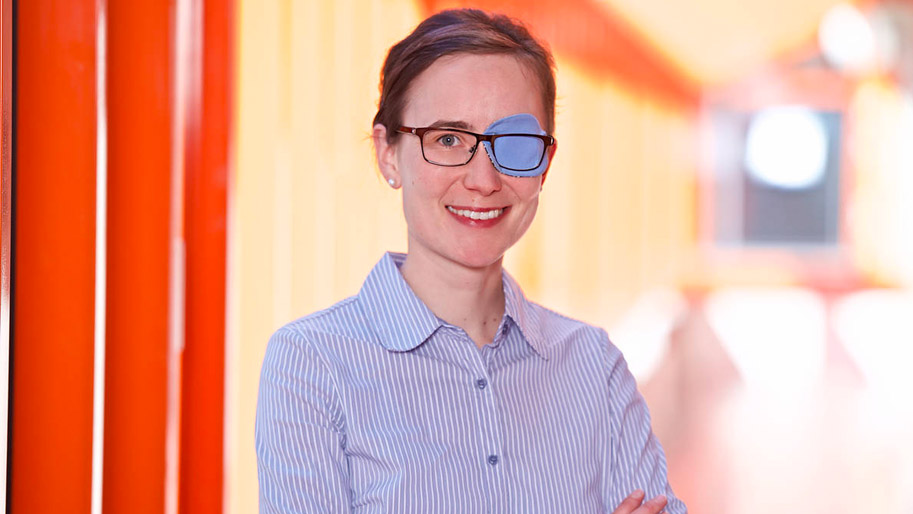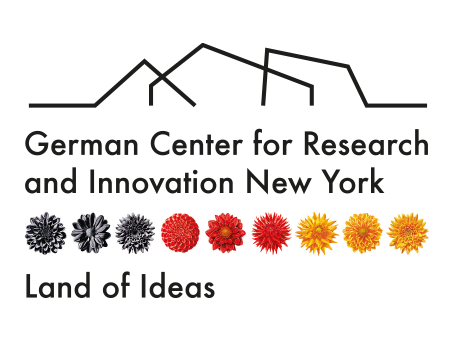The Future of Knowledge Sharing

Dr. Kathrin Breuing is Independent Postdoctoral Researcher in the Department of Economics at the University of Konstanz (Chair of Business and Economics Education, Prof. Dr. Dr. h.c. Thomas Deißinger). She held a substitute professorship in Business and Economics Education at the University of Hohenheim/Stuttgart. Her research interests include knowledge work, digital transformation and workplace learning in the 21st century. In an interview we chat about work and COVID-19, demographic changes, the German vocational model and more.
DWIH: Germany’s vocational training models have received increased attention in the U.S. by politicians and educators in recent years. What lessons do you believe the world has to learn from Germany’s method of vocational education and training?
Breuing: The German Vocational Education and Training (VET) system is internationally renowned primarily for its so-called dual system, which combines theoretical and practical training components in vocational schools and training companies.
What distinguishes the German dual system is above all the close cooperation of the federal government with the German federal states and social partners, the strong commitment and involvement of the companies and the successful transition of qualified young people into the labor market – accompanied by a remarkably low rate of youth unemployment.
The highly institutionalized and standardized training structures and processes not only make qualifications in the 325 state-recognized training occupations (in 2020) comparable on both a national and international level, but also make certificates marketable across companies.
However, this historically grown system must adapt continuously to current challenges – especially in the light of the ongoing digital transformation and the dynamics of change that go along with it. The challenge will be to bring together the pronounced standardization of VET on the one hand and the high degree of flexibility on the other hand which is necessary to cope with the dynamics of the digitalized markets.
Together with colleagues from Switzerland and Austria we investigate how VET in German-speaking countries can be configured more flexible considering different levels and dimensions of flexibility. We developed an online navigator which gives training companies the opportunity to determine their status quo with respect to the degree of flexibility of their vocational training programs. The navigator further gives inspiration on how flexibility can be expanded and serves as a platform for the sharing of good practices.
DWIH: How do changing demographics like an aging workforce or increased cultural diversity affect how we learn and work?
We live in times of several clashing megatrends: Globalization and demographic change go hand in hand with profound cultural and age diversity, demanding intercultural and intergenerational respect and understanding – especially at work. For the first time in history, up to five generations come together in the workplace, requiring the establishment of a culture of mutual acceptance and the development of cultural competencies of the workforce.
The digital transformation marks a third megatrend, colliding with the two mentioned above: While intergenerational learning and working in its traditional form includes concepts like mentoring or job shadowing, more recent approaches such as reverse mentoring and the notion of digital natives versus digital immigrants indicate an ongoing shift in the roles of knowledge givers and takers in the digital age. However, the empirical findings on the validity of the digital native/immigrant opposition are ambiguous.
We have conducted an interview study with HR-experts from German companies. It indicates that it is more the (digital) mindset rather than the actual skills that makes younger employees increasingly take on the role of mentors: They are described as drivers and promoters, pushing, convincing and supporting their elder colleagues when it comes to the digitalization of workflows and processes.
Overall, we observe that old and young employees are moving closer together in the digital age, since learning increasingly takes place in a reciprocal manner.
DWIH: What long-term developments and positive lessons do you see coming from the current changes in how we work and are educated due to COVID-19?
Breuing: Like all areas of everyday life, the educational landscape was caught off guard by the pandemic. Many of us were forced from one day to the next to deal with digital learning and working methods for the first time. The urgency to deal with the ongoing digitalization became clear with full force – also in connection with (vocational) training and work. Thus, the coronavirus pandemic has boosted the departure into the digital world by pushing people and institutions to leave their familiar analog environment behind. And it has opened up the opportunity for many a skeptic to convince themselves of the benefits and advantages of the digital learning and working world.
Digital learning and working can be highly flexible and individualized, bringing advantages e. g. in terms of compatibility of family and career, differentiated teaching and lifelong learning. Moreover, remote learning and working extends the radius in which relevant information can be shared and knowledge generated.
However, as far as the systemic implementation of digital learning and working is concerned, we are still in an early stage.
DWIH: Based on your research, what are the major limitations and conflicts of digital vocational training?
Breuing: A prerequisite for the success of digital learning is the existence of certain framework conditions that are often not yet in place (to a sufficient degree).
On the one hand, this is a custom-fit mix of digital tools and settings tailored to the learning situation and goals and their embedding in a holistic pedagogical concept. Thus, neither analog approaches can be transferred one-to-one to online settings, nor does the sole use of technical devices or digital tools make for a good learning arrangement.
On the other hand, a corresponding infrastructure must be available as a basic requirement, above all nationwide broadband internet access for everybody. In this context, the so-called digital divide, which is becoming increasingly explosive internationally due to progressive digitalization, must be countered and equal opportunities ensured.
With a special focus on learning in the workplace, for example, new conflicts arise in the meeting of the generations. Here it is a matter of the definition of relevant knowledge (experience vs. technical/digital knowledge) and the associated appreciation and role allocation of the respective knowledge bearers.
Finally, and obviously, digital learning settings cannot completely replace presence training: For example, the digital change is also making its way into the crafts sector (e. g. through the use of digital technologies or the internet of things), but here in particular, manual tasks make presence learning indispensable.
DWIH: From your point of view, what is a very successful approach, type or tool of digital learning/e-training?
Breuing: Virtual Reality (VR) accompanied by immersive learning might be a promising future field especially for vocational education and training. It enables the simulation of machines or other complex technical entities and installations. Trainees can actively and carefree immerse themselves in these fields without bearing the risk of causing damage. Moreover, the use of VR does not interrupt real workflows, and thus saves time and costs. Combined with elements of collaboration and user-generated content, both immersive and social learning takes place. Virtual trainings are already implemented not only in the industrial sector but also in healthcare professions, e. g. for paramedics.
In addition to these rather practical training approaches, VR also facilitates remote and collaborative working and learning settings with theoretical emphasis. In the context of virtual 3D environments, meetings, conferences, workshops, or seminars can be conducted. In conjunction with an international research project we held a conference with experts from the vocational training field in an Avatar-based 3D environment of TriCAT spaces to exchange experiences and develop ideas with a view to sustainable VET. A decisive advantage over classical videoconferences is that remote interaction and close collaboration among the participants is possible – crucial requirements for the effective transfer and generation of knowledge.
Thirdly, I want to draw attention to an innovative teaching method: In order to foster self-organization, collaboration and creativity – one of the key future skills –, the framework of Scrum (grounded in the context of agile project management) can be adapted to learning contexts. The derivated eduScrum, a learner-centred approach, allows for self-determined and personalized learning. At the same time, collaborative and reflexive learning processes are stimulated by the cooperation of the Scrum-Team. By integrating online-tools, eduScrum is particularly well suited for distance learning. In one of my university remote classes I used Trello, Webex Training as well as Mahara, a platform to create multimedia portfolios.
DWIH: Thanks so sharing some knowledge with us, Dr. Breuing!
